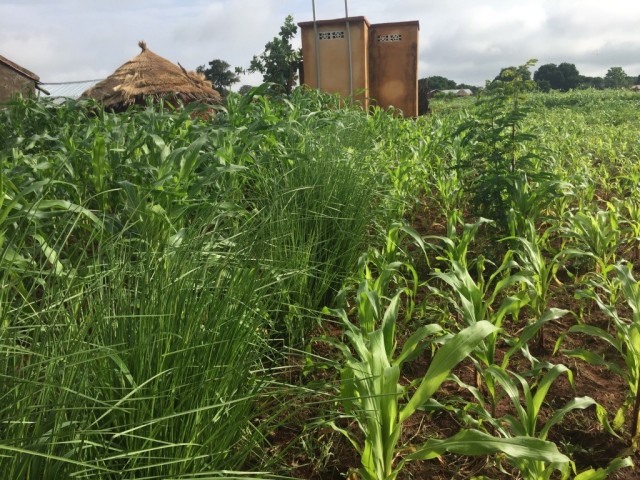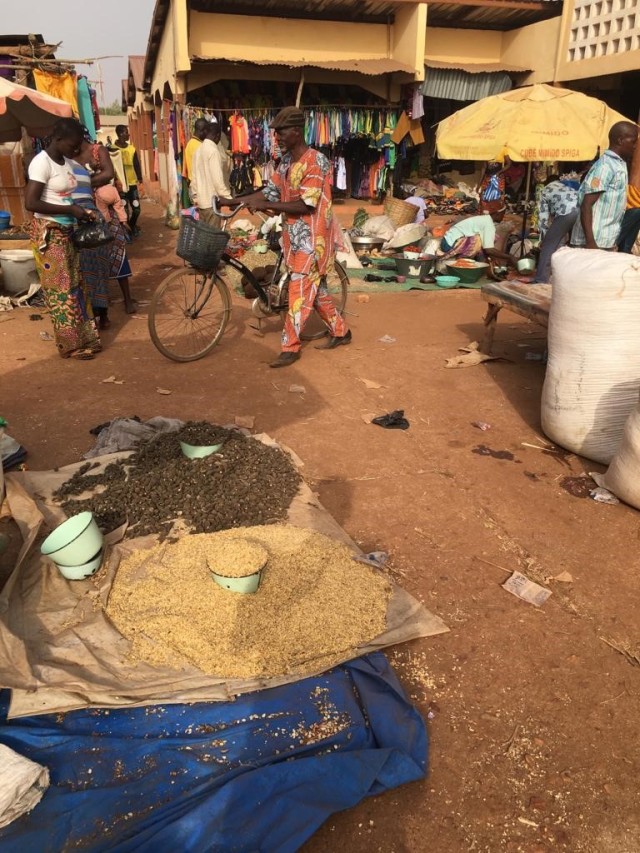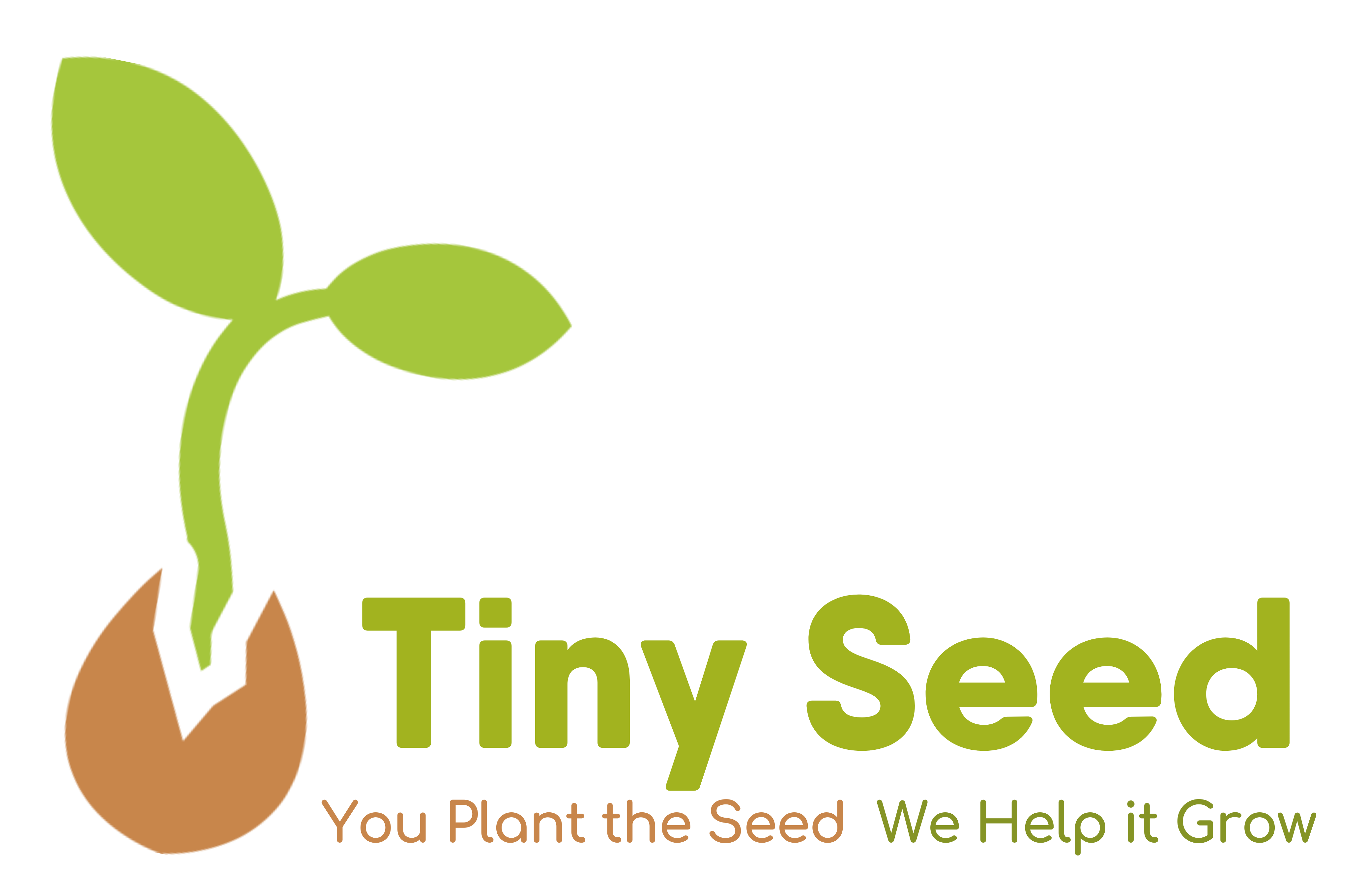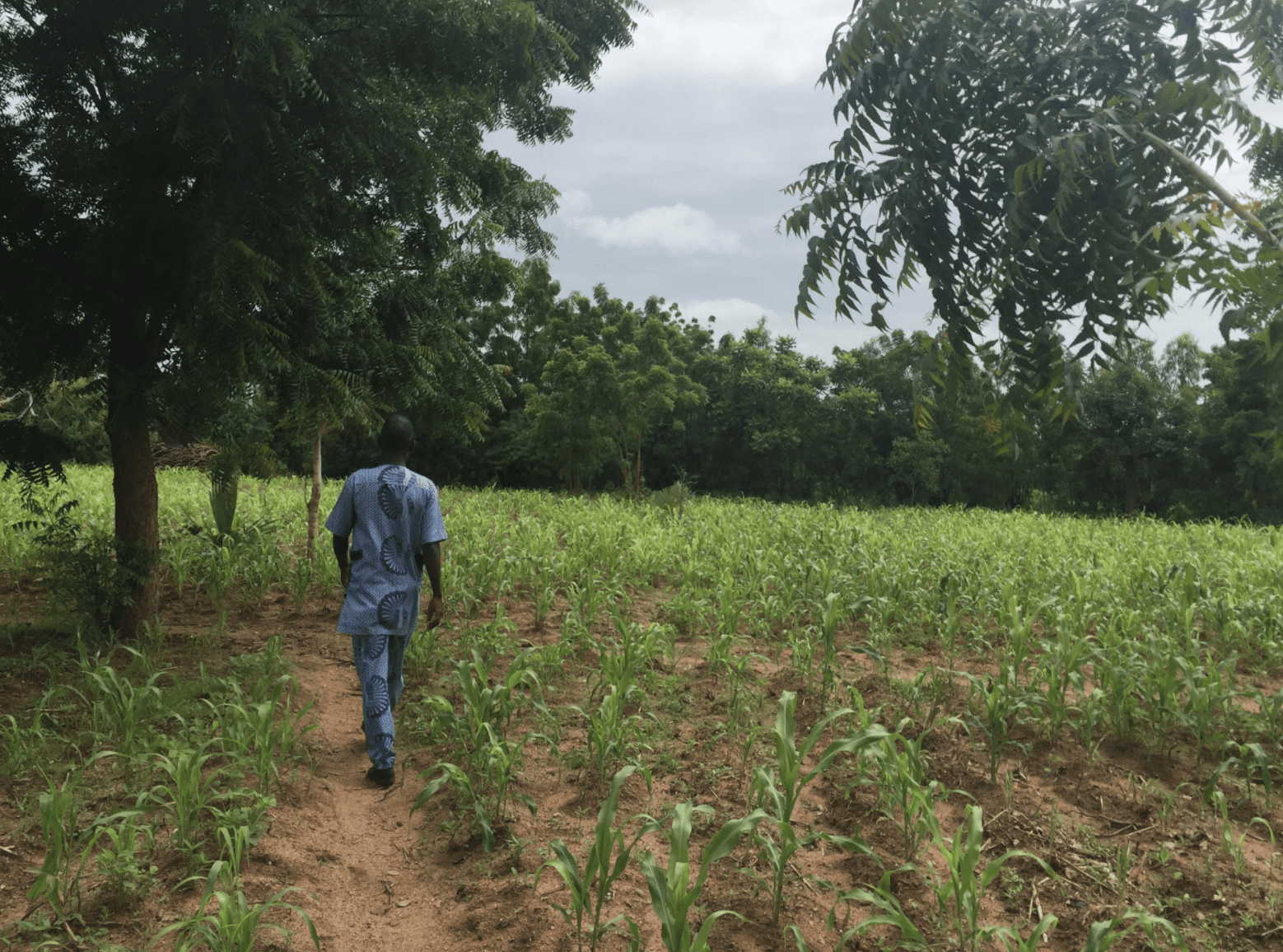PISCES – a small organic teaching farm that is currently based in Northern Togo, West Africa, is fiscally sponsored by Tiny Seed Project.
What does PISCES mean? Is it an astrological symbol? Well yes, but not for these purposes. Is it a fish farm? Not quite. It’s an acronym that stands for the Permaculture Institute for the Study of Communal Economic Systems. Phew, that’s a mouthful and also practically unintelligible so let’s unpack that a little bit:
First off, what is Permaculture? It’s an abbreviation for Permanent Agriculture that was developed by two Australian blokes, Bill Mollison and David Holmgren, back in the seventies. As an agricultural system, it seeks to mimic natural processes in order to grow nutritious food without damaging the soil.
 A field of corn in Togo. On the left side of the photo is corn grown in area where permaculture was practiced. On the right side, is a conventional corn field. The corn on the left is two to three times taller and much greener, indicating that it is growing much more vigorously than the corn on the right.
A field of corn in Togo. On the left side of the photo is corn grown in area where permaculture was practiced. On the right side, is a conventional corn field. The corn on the left is two to three times taller and much greener, indicating that it is growing much more vigorously than the corn on the right.
Consider the difference between a healthy forest and a field of corn for example. In the forest, there are many different species of plants, animals, and fungi all living together, which ecologists refer to as biodiversity. The plant species make use of all of the available vertical space to grow, from the trees with their tall canopies, to the vines that climb trees, to the shrubs several feet off of the ground, to the ferns and creepers that cover the ground. The plants also flower and produce fruit at different times, some in the spring, some in the summer, and some in the fall. This provides pollinators, such as honeybees, a food source throughout most of the year. Squirrels and birds are also able to eat the seeds and acorns that are produced.

In a forest, many different plant species coexist in the same space. They make use of different habitats within the forest and consume different resources in the soil.
In a corn field on the other hand, only one species of plant is grown, which is referred to as a monoculture. Chemical pesticides and herbicides are used to kill all the other plants and animals that would otherwise live there. From an ecological perspective, it’s not very efficient either. Corn crops often require ample amounts of irrigation as well as fertilizer to produce a sufficient harvest. The corn also only captures the solar energy for the several months that it is growing in the field from a narrow band of space several feet above the soil (in the forest, sunlight filters down from the trees, to the shrubs, to the ferns and grasses below). Fields of corn are able to produce large amounts of food per area of farm land, however that food is often not very nutritious.
When only one crop is grown, the plants end up competing with each other for the same resources. The field is also more vulnerable to weeds, diseases, and pests.
Permaculture seeks to replicate the first system while avoiding the negative aspects of the second system. First off, many different complimentary crops are grown together, which reduces the need for fertilizer as well as the amount of pests that will attack the crops. Crops are selected to maximize the vertical space in the field. Tall grains are used to support climbing beans and squash, and potatoes or clover are planted to cover the ground and help keep the soil humid. Many of these crops are harvested at different times throughout the year to take full use of the growing season.
In northern Togo, most of the population are subsistence farmers who grow food to feed their families and sell whatever excess they have to purchase basic supplies. The majority of farmers grow food in monocultures similar to the USA, however, they have little access to irrigation or tractors. Tending these fields is very labor-intensive and farmers often need to cultivate large tracts of land in order to produce enough food to feed their families. Unfortunately, monocultures impoverish the soil each year that they are cultivated. This means that fields require progressively increasing applications of chemical fertilizer to ensure the same harvest. After a certain number of years, it can become uneconomical to farm the same section of land and the field may be abandoned
Here’s where the second word in the PISCES acronym, “Institute,” comes in to play. Permaculture techniques are often general enough that they can be used in a range of environments, from temperate gardens to tropical jungles. However, the specifics of each technique require adaptation to the particular climate and biome (plant and animal community) that they are being practiced in. By experimenting with a variety of growing techniques and plant combinations, PISCES will, through trial and error, develop a permaculture system adapted to the region. If our system proves to be successful, i.e. it is easy to implement and produces sufficient food, then we will train other farmers and assist them to incorporate permaculture techniques on their own farms. This will improve environmental conservation because permaculture farms create more natural environments, which increases biodiversity. In successful permaculture systems, more food can be grown per area of land than in monocultures because natural resources, such as the soil and sunlight, are used more efficiently. This reduces the pressure to cut down existing forests in order to create more farmland.
Interested in learning more click here
Support PISCES & Donate here


